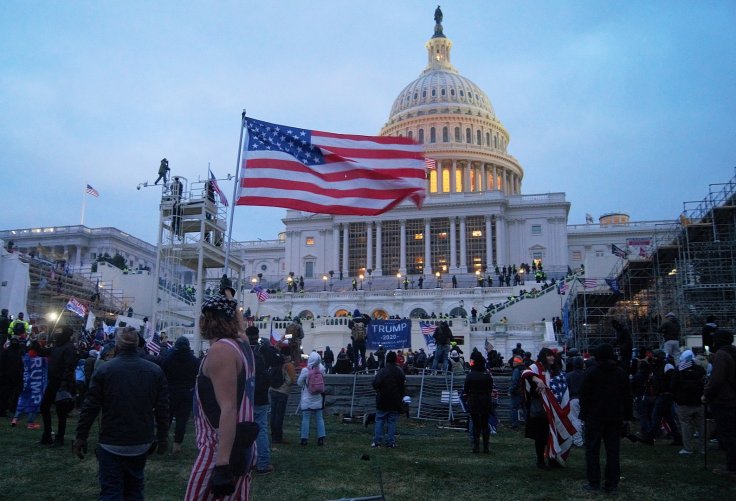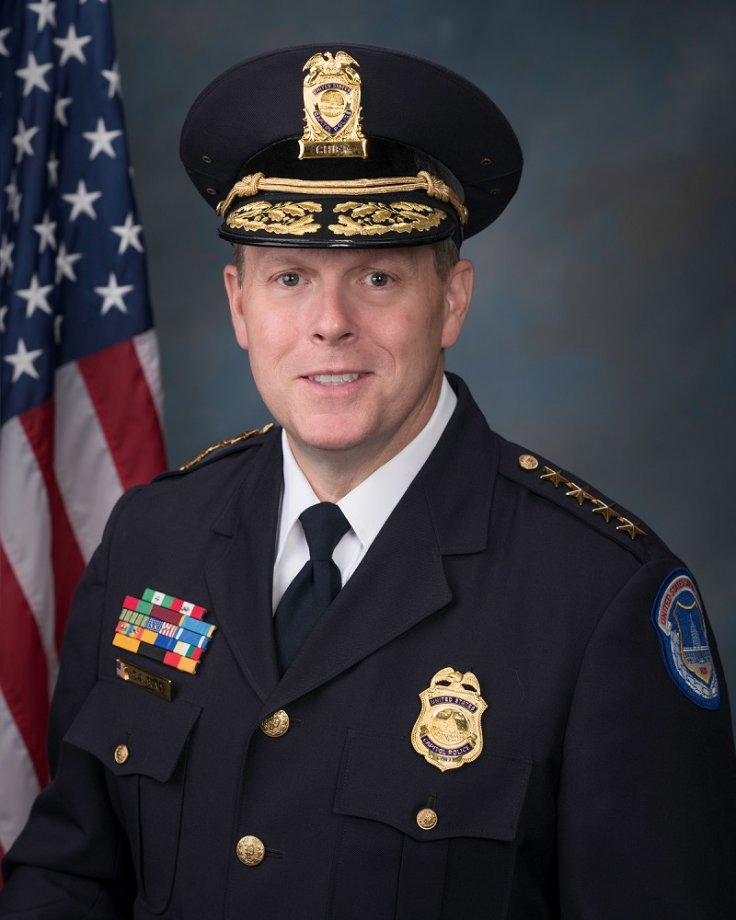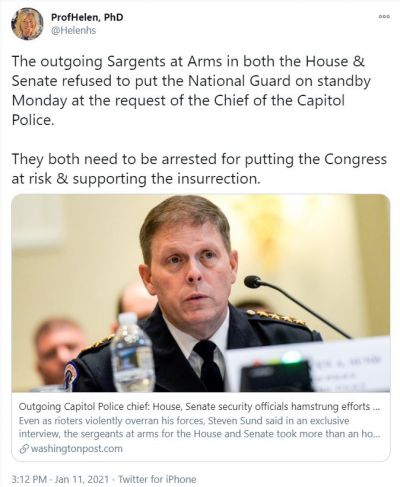The lapse in security at the Capitol Hill was clear on January 6 when thousands of Pro-Trump protesters broke into the building. At first glance, it seemed, Capitol Police were to be blamed. They did not have enough officers to hold down the building and according to Pentagon officials, they did not request for National Guard. Capitol Police Chief Steven Sund was blamed and he resigned on January 7.
On Monday (January 11), however, he broke his silence and said he had asked House and Senate security officials for National Guard. Police intelligence informed him before the protest that the crowd would be much larger than previous demonstrations. But, the officials including House Sergeant at Arms Paul Irving were afraid of the "optics" of deploying the National Guard at the Capitol.
"We knew it would be bigger. We looked at the intelligence. We knew we would have large crowds, the potential for some violent altercations. I had nothing indicating we would have a large mob seize the Capitol," Sund told Washington Post in an interview.

Request Rejected Six Times
Sund said he had asked for National Guard six times but every time, his request was rejected. Sund had only about 1,400 Capitol Police officers to defend the building but they were quickly overrun by thousands of protesters. After his first request for Guards was rejected before the protest, Sund asked for more forces five more times on January 6 afternoon including in a conference call with Pentagon officials.
"I am making an urgent, urgent immediate request for National Guard assistance. I have got to get boots on the ground. The situation is dire," Sund recalled saying during the conference call at 2.26 PM on January 6.
The call was attended by Washington government and Pentagon officials apart from Lieutenant General Walter E Piatt, Director of the Army Staff. But Piatt said he could not recommend approval of National Guard request to his boss Ryan McCarthy, Army Secretary. "I don't like the visual of the National Guard standing a police line with the Capitol in the background," Piatt said.
John Falcicchio, DC Mayor Muriel Bowser's chief of staff, recalled, "Literally, this guy is on the phone, I mean, crying out for help. It's burned in my memories."

Contrasting Remarks
Sund's remarks were in complete contrast to what Pentagon officials told the media. According to them, Capitol Police never asked for DC guards before the event or requested to put a riot contingency plan. Instead, he asked for help when the crowd was about to break in.
"We rely on Capitol Police and federal law enforcement to provide an assessment of the situation. And based on that assessment that they had, they believed they had sufficient personnel and did not make a request," Jonathan Hoffman, a Pentagon spokesperson said in a news conference after the riots.
National Guard finally arrived at 5.40 PM on January 6 when the situation was under control and four people had already died. House Speaker Nancy Pelosi and other lawmakers asked for Sund's resignation. Irving and Senate Sergeant at Arms Michael Stenger also followed Sund in resigning.







"They came with riot helmets, gas masks, shields, pepper spray, fireworks, climbing gear, explosives, metal pipes, baseball bats. I have never seen anything like it in 30 years of events in Washington. If we would have had the National Guard, we could have held them at bay longer, until more officers from our partner agencies could arrive," Sund explained to Washington Post.
As another threat of violence looming large on January 20, when President-elect, Joe Biden, is set to be inaugurated, Sund says he is concerned that with bureaucratic hurdles, things could get bad again. "My concern is if they don't get their act together with physical security, it's going to happen again," he said.








